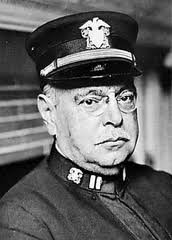An apple pie is a fruit pie in which the principal filling ingredient is apples. Apple pie is often served with whipped cream, ice cream ("apple pie à la mode"), custard or cheddar cheese. It is generally double-crusted, with pastry both above and below the filling; the upper crust may be solid or latticed (woven of crosswise strips). The bottom crust may be baked separately ("blind") to prevent it from getting soggy. Deep-dish apple pie often has a top crust only. Tarte Tatin is baked with the crust on top, but served with it on the bottom.
Apple pie is an unofficial symbol of the United States and one of its signature comfort foods.
Ingredients
Apple pie can be made with many different sorts of apples. The more popular cooking apples include Braeburn, Gala, Cortland, Bramley, Empire, Northern Spy, Granny Smith, and McIntosh. The fruit for the pie can be fresh, canned, or reconstituted from dried apples. Dried or preserved apples were originally substituted only at times when fresh fruit was unavailable. The basic ingredients of the filling are sugar, butter, a thickener like cornstarch and an acidic ingredient like lemon juice. Spices may be added according to taste, most commonly cinnamon, and sometimes nutmeg. Lemon juice is used to prevent oxidation of the apples when macerating the filling. Many older recipes call for honey in place of the then-expensive sugar.
Serving
Apple pie is often served à la mode, that is, topped with ice cream.
Nutrition
A commercially prepared apple pie is 52% water, 34% carbohydrates, 2% protein, and 11% fat (table). A 100-gram serving supplies 237 Calories and 13% of the US recommended Daily Value of sodium, with no other micronutrients in significant content (table).
In American culture
Apple pie was brought to the colonies by the English, the Dutch, and the Swedes during the 17th and 18th centuries. Two recipes for apple pie appear in America's first cookbook, American Cookery by Amelia Simmons, which was published in 1796.
The apple pie had to wait for the planting of European varieties, brought across the Atlantic, to become fruit-bearing apple trees, to be selected for their cooking qualities as there were no native apples except crab apples, which yield very small and sour fruit. In the meantime, the colonists were more likely to make their pies, or "pasties", from meat, calling them coffins (meaning basket) rather than fruit; and the main use for apples, once they were available, was in cider. However, there are American apple pie recipes, both manuscript and printed, from the 18th century, and it has since become a very popular dessert. Apple varieties are usually propagated by grafting, as clones, but in the New World, planting from seeds was more popular, which quickly led to the development of hundreds of new native varieties.
Apple pie was a common food in 18th-century Delaware. As noted by the New Sweden historian Dr. Israel Acrelius in a letter: "Apple pie is used throughout the whole year, and when fresh Apples are no longer to be had, dried ones are used. It is the evening meal of children."
The mock apple pie, made from crackers, was probably invented for use aboard ships, as it was known to the British Royal Navy as early as 1812. The earliest known published recipes for mock apple pie date from the antebellum period of the 1850s. In the 1930s, and for many years afterwards, Ritz Crackers promoted a recipe for mock apple pie using its product, along with sugar and various spices.
Apple pie was one of the dishes that Rhode Island army officers ate for their Fourth of July celebrations during the Siege of Petersburg.
Although eaten in Europe since long before the European colonization of the Americas, apple pie as used in the phrase "as American as apple pie" describes something as being "typically American". In the nineteenth and twentieth centuries, apple pie became a symbol of American prosperity and national pride. A newspaper article published in 1902 declared that "No pie-eating people can be permanently vanquished." The dish was also commemorated in the phrase "for Mom and apple pie"—supposedly the stock answer of American soldiers in World War II, whenever journalists asked why they were going to war. Jack Holden and Frances Kay sang in their patriotic 1950 song "The Fiery Bear", creating contrast between this symbol of U.S. culture and the Russian bear of the Soviet Union:
Advertisers exploited the patriotic connection in the 1970s with the commercial jingle "baseball, hot dogs, apple pie and Chevrolet".
Modern American recipes for apple pie usually indicate a pastry that is 9 inches in diameter in a fluted pie plate, with an apple filling spiced with cinnamon, nutmeg, and lemon juice, and it may or may not have a lattice or shapes cut out of the top for decoration. One out of five Americans surveyed (19%) prefer apple pie over all others, followed by pumpkin (13%) and pecan (12%).
The unincorporated community of Pie Town, New Mexico, is named after apple pie.
- 1 (8-ounce) container refrigerated crescent rolls
- 8 slices deli turkey (about 1/2 pound)
- 8 slices deli ham (about 1/2 pound)
- 12 slices deli hard salami (about 1/2 pound)
- 8 slices Swiss cheese (about 1/2 pound)
- 1 (12-ounce) jar roasted peppers, drained
- 4 eggs, beaten
- Preheat oven to 350º. Unroll crescent roll dough without separating triangles. Separate dough into 2 squares along center cut line.
- Place 1 square of dough into an 8-inch square baking dish. Using your fingertips, press dough to fit bottom of dish.
- Layer with half the turkey, ham, salami, Swiss cheese, and roasted peppers. Pour half the beaten eggs over the peppers and repeat the layers with remaining meats, cheese, and peppers. Place remaining square of dough over peppers. Pour remaining beaten eggs over dough and cover lightly with foil.
- Bake 20 minutes, remove foil, and bake an additional 20 to 22 minutes, or until golden and heated through. Let cool 5 minutes, then cut and serve.
1944 – Plutonium is first produced at the Hanford Atomic Facility and subsequently used in the Fat Man atomic bomb dropped on Nagasaki, Japan.
And births this date include....









